-
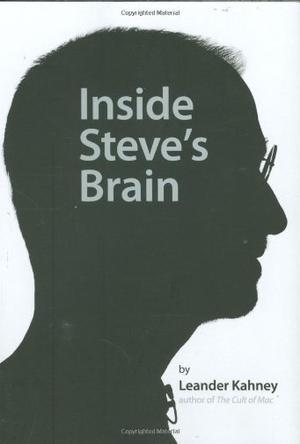
Inside Steve's Brain
Steve Jobs has turned his personality traits into a business philosophy. Here’s how he does it. It’s hard to believe that one man revolutionized computers in the 1970s and ’80s (with the Apple II and the Mac), animated movies in the 1990s (with Pixar), and digital music in the 2000s (with the iPod and iTunes). No wonder some people worship him like a god. On the other hand, stories of his epic tantrums and general bad behavior are legendary. Inside Steve’s Brain cuts through the cult of personality that surrounds Jobs to unearth the secrets to his unbelievable results. It reveals the real Steve Jobs—not his heart or his famous temper, but his mind. So what’s really inside Steve’s brain? According to Leander Kahney, who has covered Jobs since the early 1990s, it’s a fascinating bundle of contradictions. Jobs is an elitist who thinks most people are bozos—but he makes gadgets so easy to use, a bozo can master them. He’s a mercurial obsessive with a filthy temper—but he forges deep partnerships with creative geniuses like Steve Wozniak, Jonathan Ive, and John Lasseter. He’s a Buddhist and anti-materialist—but he produces mass-market products in Asian factories, and he promotes them with absolute mastery of the crassest medium, advertising. In short, Jobs has embraced the traits that some consider flaws—narcissism, perfectionism, the desire for total control—to lead Apple and Pixar to triumph against steep odds. And in the process, he has become a self-made billionaire. In Inside Steve’s Brain , Kahney distills the principles that guide Jobs as he launches killer products, attracts fanatically loyal customers, and manages some of the world’s most powerful brands. The result is this unique book about Steve Jobs that is part biography and part leadership guide, and impossible to put down. It gives you a peek inside Steve’s brain, and might even teach you something about how to build your own culture of innovation. -
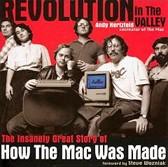
Revolution in The Valley
There was a time, not too long ago, when the typewriter and notebook ruled, and the computer as an everyday tool was simply a vision. Revolution in the Valley traces this vision back to its earliest roots: the hallways and backrooms of Apple, where the groundbreaking Macintosh computer was born. The book traces the development of the Macintosh, from its inception as an underground skunkworks project in 1979 to its triumphant introduction in 1984 and beyond. The stories in Revolution in the Valley come on extremely good authority. That's because author Andy Hertzfeld was a core member of the team that built the Macintosh system software, and a key creator of the Mac's radically new user interface software. One of the chosen few who worked with the mercurial Steve Jobs, you might call him the ultimate insider. When Revolution in the Valley begins, Hertzfeld is working on Apple's first attempt at a low-cost, consumer-oriented computer: the Apple II. He sees that Steve Jobs is luring some of the company's most brilliant innovators to work on a tiny research effort the Macintosh. Hertzfeld manages to make his way onto the Macintosh research team, and the rest is history. Through lavish illustrations, period photos (many never before published), and Hertzfeld's vivid first-hand accounts, Revolution in the Valley reveals what it was like to be there at the birth of the personal computer revolution. The story comes to life through the book's portrait of the talented and often eccentric characters who made up the Macintosh team. Now, over 20 years later, millions of people are benefiting from the technical achievements of this determined and brilliant group of people. -
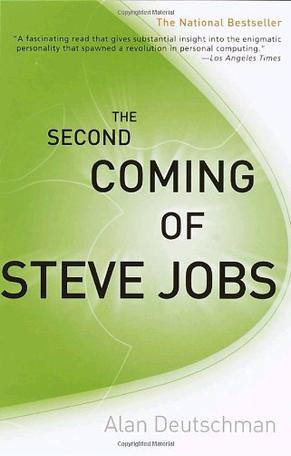
The Second Coming of Steve Jobs
在线阅读本书 When Steve Jobs became the acting CEO of Apple Computers, it was hemorrhaging more than a billion dollars a year. His return after twelve years of exile to the company he cofounded completely revitalized Apple. With the revolutionary success of the iMac, it turned a profit of more than six hundred million dollars - one of the biggest turnarounds in business history. Based on interviews with scores of people - rivals, colleagues, friends - who have worked with Jobs over the years, The Second Coming of Steve Jobs presents the most revealing portrait yet of this extraordinarily complex man - How and why he almost gave up on his career; the details of his negotiations with Disney's Jeffrey Katzenberg and Michael Eisner, and the culture clash between Silicon Valley and Hollywood; his methods of leadership, management, creativity and innovation; his friendship and rivalry with Bill Gates - and much more. Now, as Jobs prepares to conquer Hollywood with his enormously successful animation film studio, Pixar, Alan Deutschman brings readers one of the most talked-about business biographies of modern times. -
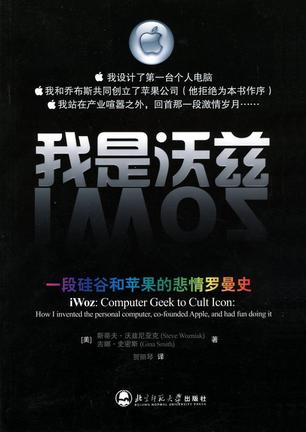
我是沃兹
个人电脑对世界的改变仍在继续…… 斯蒂夫·沃兹尼亚克正是这场变革的开始。 从个人电脑的发明到苹果公司的崛起,技术和商业上的成功,没能改变他淘气而又害羞的性格,更没能让他放弃对技术理想的坚持。尽管他的设计成就了最初的苹果电脑公司,但是与乔布斯性格上的天壤之别,还是让他离开了苹果。没有人知道沃兹的离去是个人电脑发展的幸运,还是不幸。无论如何,一个电脑天才最终成为了新技术商业化的冷眼旁观者。 书中,沃兹从自己的视角回顾了那段绚烂的岁月。透过调侃的语言和轻松的笔调,一段交织着理想和现实、憧憬与迷茫、快乐与悲情的浪漫故事展现在每个读者面前。那种纯粹的创业精神,让每个人感动。 而曾为乔布斯撰写传记的艾伦说:“他(沃兹)的叙述是值得等待的——它为个人电脑革新起源这一历史增添了新的迷人一页。” -
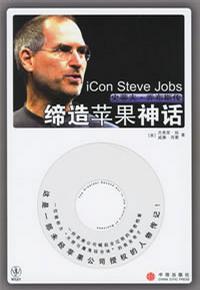
缔造苹果神话
美国著名作家斯科特•菲茨杰拉德曾经说过,在美国人的生活中,不会有第二次创业的经历。但他显然没有预料到史蒂夫•乔布斯会上演一次漂亮的“东山再起”。 本书记录了在这个富有开创性的数字化商业时代,一位令世人称羡的风云人物的生活和工作经历。整部作品的材料多来源于硅谷和好莱坞,杰弗里•扬是第一位撰写史蒂夫•乔布斯传记的作家,他和这部作品的合著者威廉•西蒙从一个全新视角为读者展示了史蒂夫•乔布斯这个非凡的“电子神童”,并对他从一个默默无闻的中 学生成长为苹果公司的“重量级人物”和计算机革命的“弄潮儿”的传奇经历作了精彩绝伦的描绘。 在数字商业社会风云变幻的年代,乔布斯也经历了人生的大起大落。他曾在盲目自大而众叛亲离,被自己创建的公司赶出去,甚至完全脱离了电脑世界。但正是在被赶出自己亲手创建的苹果公司10年之后,他又卷土重来,并在一次只有他才能成功发动的“公司政变”后,重新执掌了苹果公司的大权。毫无疑问,这是乔布斯在 数字化时代的尘器中所做出的最巨大、最让人佩服的成就。 本书的出版并没有经过苹果公司授权,写作风格真实、大胆而泼辣,两位作者以锐利的眼光审视了苹果公司的兴衰成败与权力更迭,并对乔布斯本人做了全面的透析,既展示了他的过人智慧和商业成就,也没有回避他人格上的缺点和失当的行为。如果你想深入了解这位“数字之王”,了解他是如何纵横于电影、音乐和计算机 三个领域的,那么这本书你一定要读。